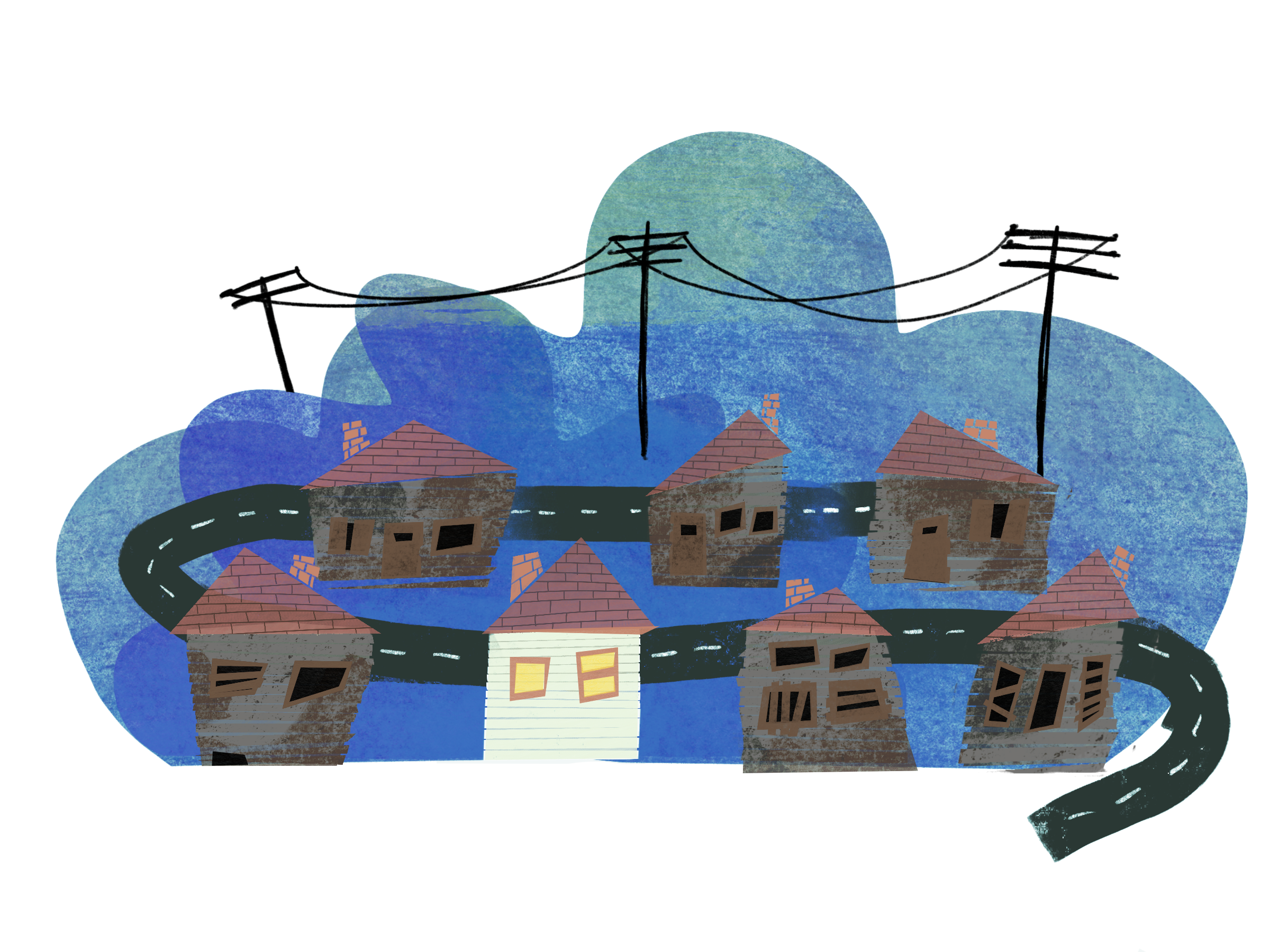At the dawn of the foreclosure crisis in 2009, Mary Kaptur, a Democratic House representative from Ohio, shocked the nation from the House floor by urging, “So I say to the American people, you be squatters in your own homes. Don’t you leave.” The gravity of Kaptur’s words reflects the anxiety of that period, which many Americans still feel even a decade later as the fallout from the foreclosure crisis persists. Seventy-two percent of households making less than $15,000 a year qualify as severely cost-burdened, meaning they spend over 50 percent of their income on housing. Hundreds of thousands of people experiencing homelessness remain unsheltered, and this unsheltered population increased in 2018. Despite the overwhelming need for affordable housing, 1.3 percent of homes and 6.8 percent of rental units sit vacant. In the midst of this resource disparity, squatting has the potential to ameliorate the US’s housing crisis.
Technically known as “adverse possession,” squatters’ rights in the US are a holdover from English common law. To claim title to a property, a squatter must meet some general criteria. They must squat continuously, though multiple people can take turns occupying the property in a practice known as “tacking.” Possession must be exclusive, meaning the squatter excludes the public from the property, and hostile, meaning the possession infringes on the owner’s rights. Another condition is that the possession be open and notorious; if the landlord bothered to inspect the property, they should discover the squatter. Finally and most obviously, trespassing charges, like those for many other crimes, are subject to a statute of limitations, which stipulates the length of time since the offense after which the victim can no longer prosecute. To claim title, the squatting must have occurred for long enough that the statute of limitations on trespassing actions has expired.
To Americans today, squatters’ rights may seem obsolete. However, housing shortages across the country could restore squatting to the national consciousness. Oregon and California, for instance, have some of the highest homelessness rates in the country, and many members of these populations are unsheltered. Even so, over one in 20 households in Portland, Oregon and over one in ten households in Riverside, California are vacant. That amounts to a lot of unoccupied housing, so how hard would it be to squat in these cities? In Oregon, the statute of limitations is ten years, and in California it’s only five. Although this seems like a long time, it is still possible for committed squatters in either state to secure a permanent residence, particularly when coordinating with other squatters or housing groups. Additionally, squatters can find household vacancy rates of around ten percent in New Orleans, Detroit, and Baltimore. In New York City, the quantity of unoccupied rental units has increased over the past few years to six percent for private, non-regulated units. Despite this abundance, New York City has the largest homeless population of any city in the US. For these reasons, New York City is ripe for a mass movement of squatters.
There is a historical precedent for such a response; only a few decades ago, squatting was a prominent element of the urban landscape, particularly in New York City. In the 1980s, the Association of Community Organizations for Reform Now (ACORN) championed squatting efforts in major cities across the U.S. In 1987, ACORN’s work with squatters in New York City pressured the city to yield 58 buildings to the squatters, along with a $2.7 million dollar loan fund. Another victory came 15 years later, when the city government bowed to squatters by selling 11 buildings in the Lower East Side for a dollar each to a housing nonprofit.
Smaller contemporary groups show that squatting is still a feasible housing strategy. During the foreclosure crisis, the Miami nonprofit Take Back the Land reported that it cost just $200 to move a family into an empty residence. Compared with other much more expensive options, such as emergency motel stays, squatting is an attractive alternative. By promoting squatting in conjunction with efforts like know-your-rights trainings and furniture drives, housing advocates have the opportunity to realize significant gains in the struggle for housing rights.
Housing shortages in major cities have received attention in recent years, but effective, tangible remedies have been difficult to identify. Reintroducing the legal framework of squatters’ rights could provide a temporary solution to individuals and families who struggle to find shelter.
Illustration by Natalie Saenz ’20: nsaenz.myportfolio.com, instagram.com/natalie_30
